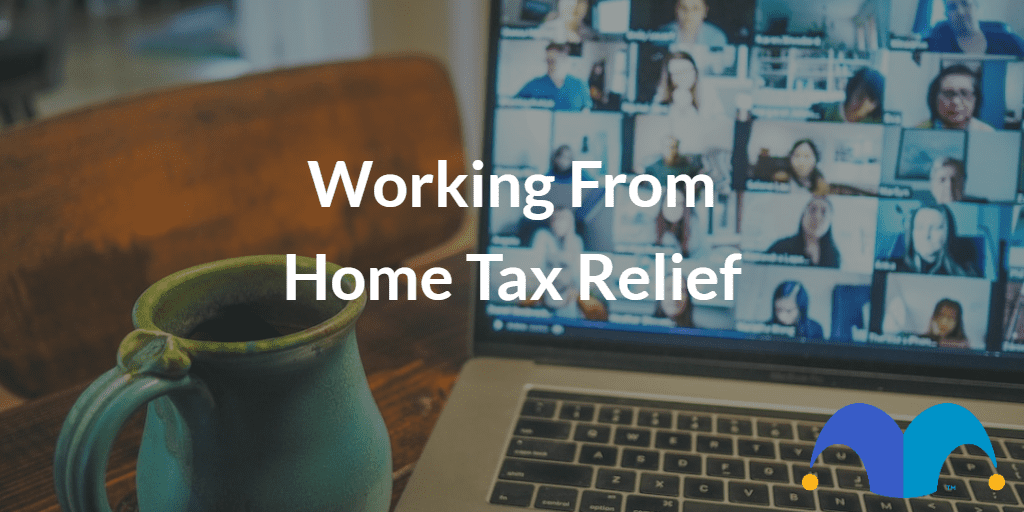Please note that tax treatment depends on your individual circumstances and may be subject to change in the future. The content in this article is provided for information purposes only. It is not intended to be, nor does it constitute, any form of tax advice. Readers are responsible for carrying out their own due diligence and for obtaining professional advice before making any investment decisions.
Are you working from home? If so, you might be eligible for tax relief. With rising living costs and spiralling energy bills likely affecting your wallet, this is great news! But what can you claim? And how does the process work? Here’s a rundown.
Who can claim working from home tax relief?
If you are employed, you can claim working from home tax relief for the 2021/22 tax year if you meet the following criteria:
- Your employer required you to work from home, even for just one day, from 6 April 2021.
- You don’t file Self-Assessment tax returns.
- Due to working from home, your costs are higher.
- Your employer hasn’t covered your expenses.
If you are self-employed and working from home, you can claim relief on certain business expenses through your Self-Assessment tax return. Just remember to file by the tax return deadline!
What can you claim when working from home?
Right, so that’s who can claim working from home tax relief. What are you entitled to, though? Well, it depends on whether you’re employed or self-employed.
If you’re employed
You can claim basic working from home tax relief on up to £6 per week. For basic rate taxpayers, this means saving up to £62 in the tax year, and higher rate taxpayers will gain £124.
If you’re self-employed
How much you can claim as a self-employed taxpayer depends on whether you work more or less than 25 hours per month at home.
Do you work less than 25 hours per month?
You can claim tax relief on allowable expenses, which include office equipment, training fees and vehicles. You can also claim tax relief on utility bills – but only for the portion of the bill that relates to working from home.
How do you apportion these utility costs? There are a few ways. For example, you might divide the electricity bill by how many hours you work from home each month, or the number of rooms you use to run your business.
You should have evidence, such as utility bills, to support your claim.
Do you work 25 hours or more per month?
You can use ‘simplified expenses’ if you work from home for 25 hours or more per month. Using simplified expenses means you can claim a flat rate for working from home, vehicles and living at your business.
You can use the government’s simplified expenses checker to see what you can claim. Again, always keep paperwork to evidence your claim.
How do you claim tax relief for working from home?
To claim tax relief, visit the gov.uk website and answer the questions provided. Depending on your answers, you’ll either fill in a Self-Assessment tax return or complete your claim online.
How is the claim paid?
If you’re employed and your claim is successful, your PAYE tax code will change. This means you’ll get a tax rebate through your salary until March 2022.
If you’re self-employed, you’ll pay less income tax for the tax year.
What if it doesn’t cover your costs?
If the amount you can claim for doesn’t cover your costs, what you can do again depends on whether you’re employed or self-employed.
If you’re employed
The standard tax relief on £6 per week may not cover your costs. You can apply for higher home working expenses; however, you will need evidence to support your claim. You can’t claim on anything used for both personal and business use (e.g. broadband).
If you’re self-employed
Add the claim for higher expenses to your Self-Assessment tax return. Just ensure you have proof of costs incurred.
Can you backdate a claim?
Yes! If you’re employed, and you didn’t claim for the 2021/22 tax year, you can backdate a claim for working from home tax relief. This only applies if your employer asked you to work from home for at least one day during that tax year.
The UK government accepts backdated claims for up to four years, but it makes sense to apply sooner rather than later. To backdate a claim, you can apply through the gov.uk website.
A backdated claim will be paid as a lump sum in your salary. It’ll show up on your payslip.
Takeaway
If you worked at home at some point during the pandemic, you can claim tax relief for your expenses. Just make sure you’ve got evidence to support any claim you make. And remember, if you’re self-employed, the rules are slightly different, although you can still claim some form of tax relief on business expenses.
